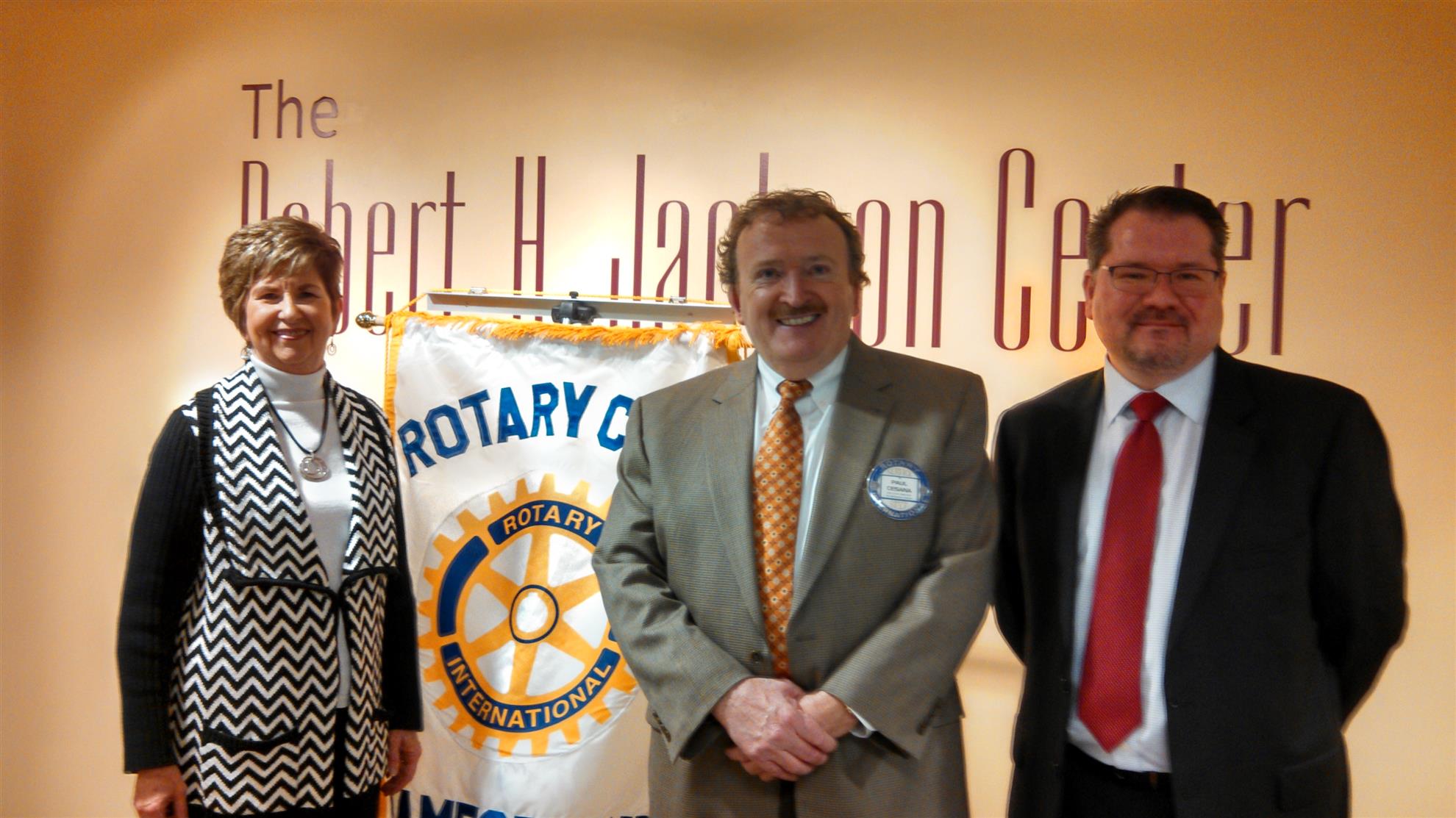The "Business" of The Resource Center
Posted by Ruth Lundin
on Nov 17, 2014
Sharon Hamilton, Assistant District Governor introduced the speaker. “One of our own” Paul Cesana, Executive Director of the Resource Center.
Paul Cesana is a native of Italy who came to Buffalo to study at UB. His career advanced in western New York. He first worked at the Resource Center in 1978.
He returned in 1988 as Executive Director. Paul’s tenure here has been marked by growth, expansion, and the development of many new services and support. His leadership was instrumental in the collaboration, design and establishment of a number of related corporations including the TRC Foundation, Filling the Gap Inc., and its subsidiary corporations, that complement and support the mission of The Resource Center.
Since 1988, TRC’s budget has grown from $17 million to over $100 million annually. The number of people working has doubled. TRC is the largest provider of services for persons with disabilities in Chautauqua County and one of the largest non-profits. Paul is a past president of the Board of the NYS Rehabilitation Association and has served the industry in other capacities. He has been a member of Rotary Club since 1990.
The presentation was entitled: The ‘Business’ of the Resource Center. He points to the motto, “No money-no Mission” expressing that non-profits, too, need to be professionally managed so they can better deliver their mission.
The logo of TRC is a Triangle showing the partnership of people and their families, the community at large and The Resource Center, which was founded in 1959 by families of disabled people who wanted to find ways they could care for their loved ones in the community, not institutionalize them. The TRC Mission is to support individuals with disabilities and other challenges in four ways:
In achieving maximum independence
Contributing to community
Experience lifelong growth
Enjoying quality of life.
TRC Customers have many challenges: intellectual, severe mental health issues, physical disabilities, other disabling conditions or may be disadvantaged individuals in the community. TRC serves them and their families.
What is the difference between illness and disability. Generally, illness is temporary. Disability has a lifetime duration. TRC today understands that individuals need to recognize a person’s disability but also their strengths and abilities.
The statistics: 18.7% of the population (56.7 million people) are non-institutionalized people with disability. 38.3 million people (12.6%) have severe disabilities while 12.3 million (4.4%) 6 years old or older need assistance with one or more activities of daily living. How does TRC support these people? Products and Services: Residential, Health & Wellness (primary care, employment/self sufficiency) Day Services & Supports. For example, 200 people a year are placed in businesses in the community in addition to employing in TRC related businesses.
TRC has a full array of resources to bring to bear on any problem:
- Organizational structure/culture. Anyone who gives a contribution is an active member. The Board is elected from the active members.
- Diverse Competent/ Resources. including 300 different job titles.
- Facilities, Equipment, Hardware/software, systems. TRC has 41 facilities county wide and one in Buffalo. They include enterprises that produce products. TRC Allied Industries and Work Centers make over 300 products, many produced for the armed services. Most recently, they have developed a commercial product line that includes Dog Beds and Tank Tool Bags
- Financial resources. Budget $100,000,000 a year. 232 major cost centers.
- All these efforts are measured, to make sure that they are meeting expectations and are an effective use of resources.
TRC provides $4,000,000 in wages for disabled and serves 17,000 individuals in the County. It is the 3rd largest employer in Chautauqua County, paying $48 million in payroll and benefits. There is even a program in JHS and Pine Valley HS for health issues.
Key issues going forward:
- Moving from fragmented services to greater integration. This includes a focus on Managed Care and holistic outreach and support, and finding the most effective service to meet the needs.
- “Behavioral Health Homes” targeting the 20% who require 80% of support due to the severity or extent of their needs.
- Implementing the New York State STARS model. If you pay attention to the whole person, that person will become stronger and require fewer services.
- Finding employment in integrated settings.
- Trying to expand “ability one” enterprise-for profit government contracts.
From these issues, it follows that the trends are to focus on wellness—the strengths of the individual and the opportunities for personal growth and quality of life. The other trend is working to protect children from childhood trauma.
Questions:
- Do people move to Chautauqua County because of TRC? Are we attracting a disabled population because we have such excellent service? Mr. Cesana does not think so. The majority of the clients come from Special Ed, have families here or have lived all their lives here.
- State funding for STARS is requiring that TRC co-locate with other services in an effort to encourage the holistic approach to serving each person. The question remains, how then to get them communicate with each other.
- Do you serve everyone, or do you turn people away? TRC has traditionally served everyone, however there are some increased regulations which may require a reduction in services at the Centers.
- How do you market? In the past TRC hasn’t needed to do so. Now, due to reduced funding caused by sequestration, TRC needs to market specific programs.
- Currently, many of the properties housing TRC businesses pay taxes through the support enterprises. However, this is a diminishing amount, since it is an expense that can be reduced.

- Sharon reminded us that we heard last week about the 15 month $300,000 grant with Lutheran to move people to lesser level of appropriate services, which saves money overall.
Speaker Paul Cesana (center) with Past President Sharon Hamilton and President Todd Allen